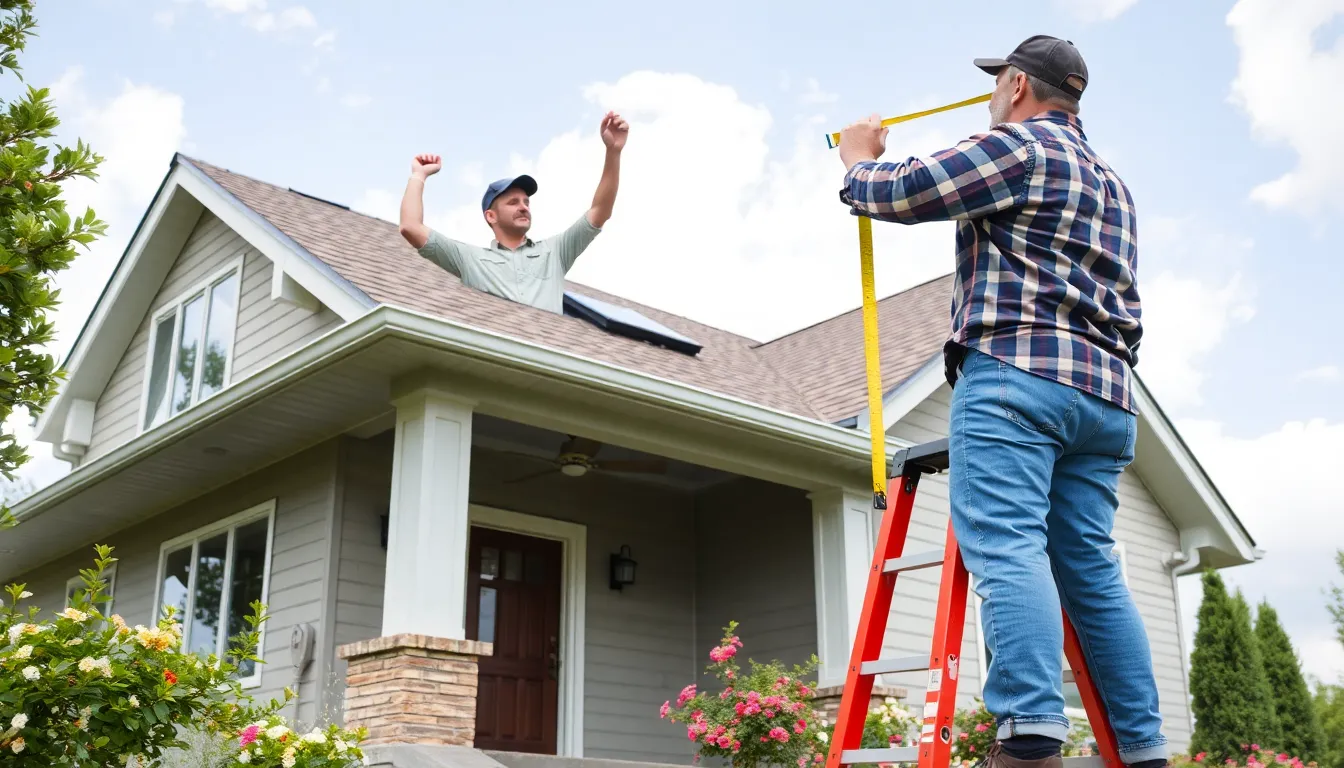Table of Contents
ToggleHome insurance might seem as exciting as watching paint dry, but understanding how it’s calculated can save homeowners a pretty penny. Imagine trying to bake a cake without knowing the ingredients; that’s what it’s like navigating home insurance without a clue about the calculation process.
Factors That Influence Home Insurance Calculation
Multiple elements determine how home insurance is calculated. Understanding these factors can empower homeowners to make informed decisions about their coverage.
Location and Its Impact
Home insurance rates vary significantly based on location. Proximity to water bodies or high-crime areas can elevate premiums. Access to local fire departments also affects the risk assessment. Certain regions may face higher risks from natural disasters like floods or earthquakes, contributing to increased costs. Seasonality plays a role as well; areas with harsh winters might incur higher insurance rates due to potential property damage.
Home Characteristics
Age and condition of the property influence insurance calculations. Older homes may require more coverage due to outdated materials and potential code violations. The type of construction, such as wood or brick, also affects risk evaluation. Square footage plays a vital role; larger homes typically need more coverage. Additional features like swimming pools, fireplaces, or security systems can either raise or lower insurance costs based on associated risks.
Coverage Amount
Choosing coverage amount impacts premium costs directly. Higher coverage limits result in increased premiums while lower limits can minimize costs. Policyholders must balance their desired coverage with budget constraints. Deductibles also affect overall prices; higher deductibles usually lead to lower premiums. Assessing personal belongings’ value is essential, as replacement costs must align with the chosen coverage. Adjusting these variables helps homeowners tailor their policies to meet financial and protection needs.
Understanding Replacement Cost

Understanding replacement cost is vital in calculating home insurance. It determines how much coverage a homeowner needs to rebuild or replace their property after a loss.
Actual Cash Value vs. Replacement Cost
Actual cash value factors in depreciation, providing a lower payout than replacement cost. Replacement cost evaluates the amount required to rebuild a home to its original condition, disregarding wear and tear. For instance, if a five-year-old roof needs replacement, actual cash value would factor in its depreciated worth, while replacement cost covers the full expense of a new roof. Homeowners should often choose replacement cost coverage for better financial protection.
Importance of Home Inventory
Creating a home inventory plays a significant role in determining appropriate insurance coverage. Listing belongings helps homeowners understand their total values, ensuring sufficient policy limits. This itemized record simplifies the claims process, making it easier to prove losses. Regular updates to the inventory maintain accuracy, especially after purchasing new items. A thorough inventory equips homeowners to receive fair compensation during a claim, ultimately safeguarding their financial interests.
Discounts and Savings Opportunities
Homeowners can take advantage of various discounts to lower their home insurance costs. Several key strategies exist to ensure significant savings.
Bundling Policies
Bundling policies offers homeowners the chance to save money. When combining home insurance with auto or other types of insurance, insurers often provide substantial discounts. These discounts typically range from 5% to 25%, depending on the insurer’s policies. Many homeowners find this option attractive, as it simplifies managing insurance by having fewer vendors. Customers can compare quotes from different insurers to identify the best bundling offers available in their area.
Security Features
Incorporating security features into a home often results in premium discounts. Security systems, smoke detectors, and deadbolts reduce the likelihood of theft or damage. Insurers frequently reward these investments with savings on premiums, sometimes up to 10% or more. These upgrades not only enhance safety but also offer financial benefits. It’s wise for homeowners to notify their insurance company about security installations, as this can potentially lead to immediate discounts.
The Underwriting Process
The underwriting process determines home insurance premiums based on various factors. Insurers assess individual risk profiles to establish appropriate coverage.
What Insurers Look For
Insurers consider multiple elements when evaluating a property. Location plays a crucial role, as proximity to risks like water bodies or high crime areas influences premiums. The home’s characteristics, such as age and condition, substantially affect risk assessments. Size and unique features can also contribute to determining coverage needs. Additionally, the chosen coverage amount alongside deductibles impacts the overall cost. Properly assessing these factors allows for more accurate insurance pricing.
Common Evaluations and Inspections
Insurers often conduct evaluations and inspections to gather necessary information. Home inspections examine structural integrity, safety features, and potential hazards. Evaluators look for installation of security systems, smoke detectors, and other safety upgrades. These assessments help identify risks that could affect premiums. Some insurers may also require replacement cost analysis to determine the necessary coverage amount. Conducting thorough evaluations ensures accurate risk assessment and pricing for homeowners.
Understanding how home insurance is calculated is essential for homeowners looking to protect their investments and manage costs effectively. By recognizing the various factors that influence premiums—from location to property features—homeowners can make informed decisions about their coverage.
Taking proactive steps such as creating a detailed home inventory and opting for replacement cost coverage can enhance financial security. Additionally, exploring discounts through bundling and security upgrades can significantly lower insurance costs.
With this knowledge in hand, homeowners can navigate the insurance landscape with confidence and ensure they’re adequately covered while maximizing savings.




